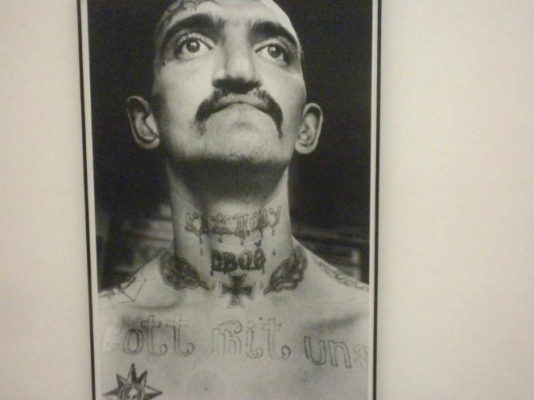Search
To search for an exact match, type the word or phrase you want in quotation marks.
A*DESK has been offering since 2002 contents about criticism and contemporary art. A*DESK has become consolidated thanks to all those who have believed in the project, all those who have followed us, debating, participating and collaborating. Many people have collaborated with A*DESK, and continue to do so. Their efforts, knowledge and belief in the project are what make it grow internationally. At A*DESK we have also generated work for over one hundred professionals in culture, from small collaborations with reviews and classes, to more prolonged and intense collaborations.
At A*DESK we believe in the need for free and universal access to culture and knowledge. We want to carry on being independent, remaining open to more ideas and opinions. If you believe in A*DESK, we need your backing to be able to continue. You can now participate in the project by supporting it. You can choose how much you want to contribute to the project.
You can decide how much you want to bring to the project.

— Why show Russian artists, these Russian artists and why now? What was going on in Russia in the seventies and eighties? It’s just that when things seem so obvious, I get a bit suspicious.
— While you were chatting I looked on the Internet to find out who sponsored the exhibition. And one of those who put up some cash was a Russian oil family.
—Ah. And what is the piece Saatchi has owned since he began collecting and is now exhibiting, once again?
— The tank full of petrol.
— It’s just… If you start looking for connections, you will find them.
This conversation between several voices took place in a hotel in London a few weeks ago. And since then I’ve kept going back to it. I’m disturbed by the constant suspicion. Tired of it. The exhibition they were referring to is the double show at the Saatchi Gallery: Breaking the ice: Moscow art 1960-1980 and Gaiety is the most outstanding feature of the Soviet Union: New art from Russia. The sponsor of Charles Saatchi’s latest project is the Tsukanov family, through the Tsukanov Family Foundation (there are those who accuse its legal representative Igor Tsukanov, also founder of the Business Centre Investment Group, an investment group interested in “the most strategic sectors” of Russia, for this read energy and petrol, of belonging to the Russian mafia). Both exhibitions add to the attention that Russian art (and Russian money) has triggered in the last few years. The latest round of this, the auctions at Christie’s and Sotheby’s, reached figures of 37 million pounds. So Saatchi couldn’t do any less. And just in case he’s gone that bit further. He’s the one who has gathered the most material.
It’s impossible to dodge Saatchi’s origins. His cradle is publicity, a profession that makes use of different media to promote an announcement of a commercial nature with the objective of attracting possible spectators, buyers. Even the director of the Saatchi Gallery doesn’t seem to have forgotten. “Russian oligarchs are spending a lot of money on the big names of Western art, but aren’t buying Russian works”, explained Rebecca Wilson to the Telegraph as a result of the double exhibition, though afterwards she wanted to erase any shadow of commercialism with “there aren’t many galleries in Moscow where these artists can exhibit”. The double proposal in the old Duke of York’s palace, also, confirms Charles Saatchi’s trademark, his approach to art, with large formats and impact as tools of seduction. The space at Sloane Square supports it: 14 rooms, white and austere, white cubes, clear zenithal light and natural wood floors, that accentuate the pieces, making them even more desirable and treasured.
But even though the titles chosen are a lot like slogans, ‘Breaking the ice’ is a long way from ‘Labour isn’t working’, the ingenious phrase that Saatchi&Saatchi invented for the Conservative Party for the 1979 elections. Not even ‘Gaiety is the most outstanding feature of the Soviet Union’, a play on words based on what Joseph Stalin said in 1935 (“Gaiety is the most outstanding feature of the Soviet Union”) has the same draw. It seems as if the super-collector, the advertising-man, is running out of fuel. Maybe it’s because marketing is dead, as the current CEO of Saatchi&Saatchi Kevin Roberts says, as it seems that his latest book, the recently published ‘Babble’, hasn’t raised the curiosity of the previous ones. Perhaps there’s not been enough time (it only saw the light of day on 5 March), but it’s not that easy to find any reviews of it on Google. There are more than 8.000 about ‘My name is Saatchi’ and ‘I am an artoholic’, and 190.000 about ‘Be the worst you can be’, a work that has sold more than 20.000 copies according to The Guardian Book Shop. However, Amazon España still offers the opportunity of being the first to comment on ‘Babble’. It’s possibly because of this, because Saatchi is no longer as sensational as in during Sensations, because the YBA are passé or members of Royal Academy, or just because at times I can’t be bothered to search for a conspiracy theory behind everything, I decided to look with fewer reservations. As the journalist Laura Cumming, from “The Observer”, said, who decided in her article about the exhibitions to grant “all credit to Saatchi for bringing this work before a British public, and for raising its profile – inevitably – on the market”. In the end it’s the first time that such an extensive exhibition about Russian art has taken place. As there is with Saatchi, a certain desire to democratize and demystify. Why these pieces and not others? Why not? All curators select. Saatchi is, or was, attributed with the power to launch careers. But so does Robin Klassnik, the director of Matt’s Gallery, “a non-commercial gallery “, as he himself usually points out.
The tank full of petrol, the piece 20:50 by Richard Wilson, on the lower floor of the Saatchi Gallery was produced by Matt’s Gallery in 1987. (Thanks for that bit of information Antonio.) It’s just, if you start looking for connections, you will find them.

She often feels like an outsider. And she asks permission, and begins to build the house by the roof, while explaining that it is because of the phobia to the comfort zone. Actually, she is a journalist (if she complains, do not believe hers). And like every journalist, he has written of this and that, here and there. Now, as a good outsider, she dares with art and its peripheries.
"A desk is a dangerous place from which to watch the world" (John Le Carré)